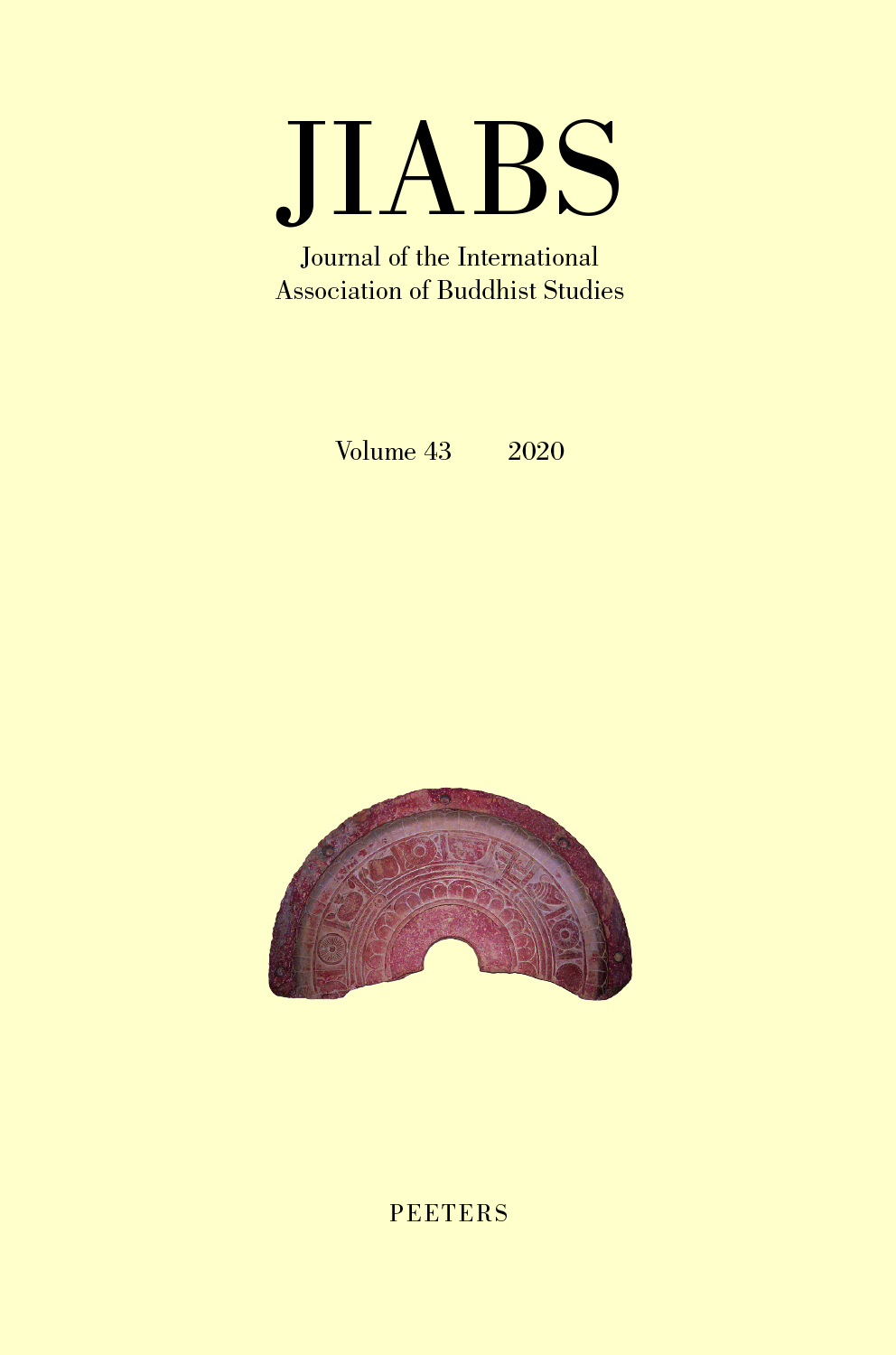 previous article in this issue previous article in this issue | next article in this issue  |

Preview first page |
Document Details : Title: 'Gos Lo tsā ba gZhon nu dpal's (1392-1481) Analytical and Direct Approaches to Ultimate Reality Author(s): MATHES, Klaus-Dieter Journal: Journal of the International Association of Buddhist Studies Volume: 39 Date: 2016 Pages: 487-518 DOI: 10.2143/JIABS.39.0.3200534 Abstract : For ’Gos Lo tsā ba gZhon nu dpal, analytical and direct approaches to ultimate reality are taught in the second and third turnings of the 'wheel of dharma' (dharmacakras) respectively. Ultimate reality is thus either determined through logical investigation which culminates in 'freedom from mental fabrications' (niṣprapañca) or experienced directly through non-conceptual types of insight. The latter practice plays a crucial role in the cultivation of non-conceptual wisdom, which is taken as the cause of fundamental transformation (āśrayaparivṛtti) according to the Dharmadharmatāvibhāgavṛtti. Based on Sahajavajra’s (11th century) *Tattvadaśakaṭīkā, gZhon nu dpal explains that all characteristic signs (nimittas), i.e., reifications that distort true reality are abandoned through it by directly realizing their natural luminosity which amounts to a direct or non-conceptual experience of their true nature. To be sure, while the usual Mahāyāna approach involves an initial analysis of the nimittas, namely, an analytic meditation which eventually turns into non-conceptual abiding in the same way as a fire kindled from rubbing pieces of wood burns the pieces of wood themselves (gZhon nu dpal explains this on the basis of Kamalaśīla’s commentary on the Avikalpapraveśadhāraṇī), mahāmudrā pith-instructions emphasize a meditation of direct perceptions right from the beginning. In view of the fact that such direct perceptions of true reality usually start from the first bodhisattva-level onwards, gZhon nu dpal points out that this is already possible on the preliminary bodhisattva-levels of the 'path of preparation'. Although his direct approach is close to the Chinese position as presented in accounts of the bSam yas debate, it is legitimized on the basis of Indian masters such as Jñānakīrti and Maitrīpa (986-1063). |
 |


